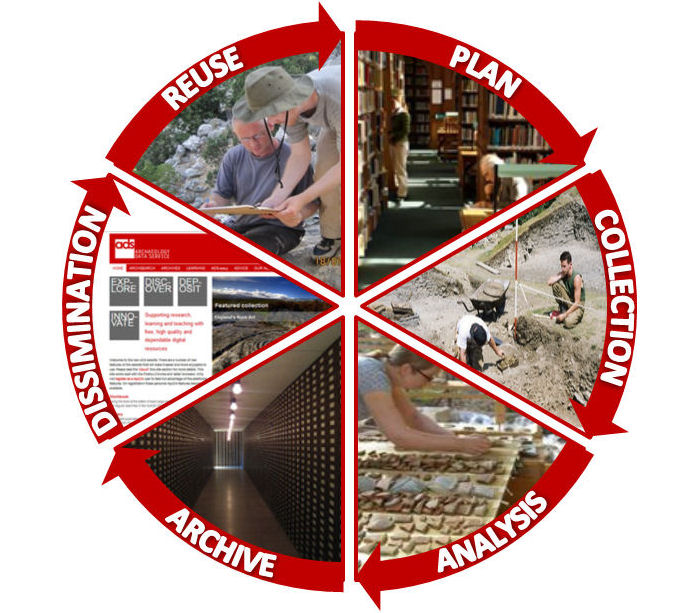
An archaeological data life-cycle model divides the research process into a number of tasks:
Project planning: At this step, you design your research and actively collect data. You also plan for data management and sharing, as well as capture and create metadata.
Data collection: This is the stage in which you do the «dirty work» of working with your data, including: entering, digitizing, transcribing, and translating, as well as checking, validating, and cleaning data. You also anonymize where necessary, describe, and manage and store data.
Data analysis: you begin to interpret data, derive data, and produce research outputs, and write publications. This is also the step at which you begin to prepare data for preservation.
Data archiving: At this step you migrate data to its best format and suitable medium, refine the metadata and documentation you produced during the ‘create data’ phase, back-up and store data (retention), as well as archive data for long-term preservation.
Data discovery: This step is when you focus on how you will distribute and share your data, including controlling access, assigning licenses where appropriate, promoting your data, and providing proper citation.
Data reuse: In true cyclical fashion, you follow-up on your research, begin new research, undertake research reviews, scrutinize your and others’ findings, and teach and learn with other researchers.
Sources:
Data management & sharing plans (Archaeology Data Service). https://archaeologydataservice.ac.uk/help-guidance/how-to-prepare-data/data-management-sharing-plans/
Data lifecycle (UK Data Service), https://ukdataservice.ac.uk/learning-hub/research-data-management/
Last updated: 31/08/2023